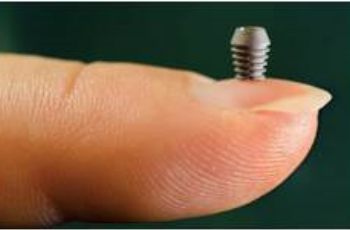Specialists in Retinitis Pigmentosa
2 Specialists found
Information About the Field of Retinitis Pigmentosa
Definition: What Is Retinitis Pigmentosa?
Retinitis pigmentosa (also known as retinopathy pigmentosa) is a disease of the eyes in which the sensory cells and the pigmented epithelium of the retina are increasingly destroyed.
First, the so-called rods (responsible for black-and-white or light-dark vision) are usually affected, then often also the cones (responsible for color vision and sharp vision) perish.
The clinical picture is genetically determined (numerous different triggering gene defects are known) and can occur in clusters within a family and be inherited according to specific patterns. Spontaneous occurrence is also possible. There are different subtypes of retinitis pigmentosa.
Patients suffer from increasing visual field loss, night blindness, and progressive vision loss. In the course, blindness may occur. Usually, both eyes are affected. Retinitis pigmentosa is one of the most common causes of blindness in middle-aged patients. Unfortunately, effective therapy is not yet known.
Which Symptoms are Typical for Retinitis Pigmentosa?
In childhood or adolescence, many retinitis pigmentosa patients develop increasing night blindness. Those affected can see much worse in the dark than healthy people, whose eyes typically adapt to light conditions and ensure basic optical perception at night.
In addition, so-called scotomas, i.e., visual field defects, occur, which typically move in a ring-like pattern from the outer visual field ("tube visual field," "gun barrel visual field," "tunnel vision") increasingly further inward.
Contrast and color vision may also be impaired, and increased sensitivity to light is possible.
In the course of the disease, visual acuity increasingly deteriorates, and complete blindness of the eyes may occur.
How Does the Physician Diagnose this Eye Disease?
First, the treating physician will ask the patient about typical symptoms of the disease and whether similar complaints are known in the family. Other possible causes of a visual disorder, such as certain medications, cancer, or metabolic disorders, are also inquired about.
Subsequently, basic vision tests are usually carried out. They can be used to objectify visual acuity and color vision. The visual field and possible deficits can also be determined with the help of perimetry. Finally, the eye's ability to adapt from light to dark and any associated night blindness is checked.
An important examination method is an electroretinogram (ERG), in which the electrical potentials of the sensory cells in the retina can be measured in response to a short flash of light. Unfortunately, in retinitis pigmentosa, these potentials are significantly reduced due to damage to the nerve cells, often before the patient experiences any symptoms.
In addition, a reflection of the ocular fundus (ophthalmoscopy, funduscopy) can be performed with a slit lamp; this often reveals specific pigmentary changes in the disease. Deviations of the vascular drawing on the retina and the visible optic nerve head can also become visible.
Optical coherence tomography (OCT) can take images of the retina, allowing the destruction of the sensory cells and the underlying pigment layer to be imaged and assessed in more detail.
Because retinitis pigmentosa is a genetic disease with specific underlying gene mutations, human genetic testing may be helpful.
Specific laboratory diagnostic methods can examine the known causative genes in affected individuals and identify possible abnormalities. This may also be an option for relatives of retinitis pigmentosa patients.
What Are the Treatment & Therapy Options?
There is currently no therapy for retinitis pigmentosa that will safely stop the progression of the disease or significantly improve symptoms. In addition, there is no known drug or intervention to stop the destruction of the sensory cells.
However, various measures can be taken to alleviate the patient's symptoms as best as possible and optimize vision individually.
These include visual aids such as glasses or contact lenses and UV protective lenses for light sensitivity. Special edge filter lenses that provide UV protection and filter specific wavelengths of light can also be prescribed. Assistive devices such as readers that magnify text may also be used.
As vision loss progresses, learning Braille and orientation training and using a cane or dog for the blind can be beneficial and make everyday life easier.
Nutritional supplements such as vitamin A or omega-3 fatty acids can be used after consultation with the attending physician.
Many therapeutic approaches, for example, gene therapy, stem cell therapy, and retinal surgery (installation of retinal implants) are currently being researched but have not yet reached the clinical routine with sufficient long-term experience for all affected patients.
In some patients, a gene therapy drug (Voretigen Neparvovec) is currently being used. First, a specific causative mutation must be detected (RPE65 mutation). After that, the drug seems to stabilize and, in some cases, even improve vision. However, the long-term results remain to be seen.
Course, Chances of Cure & Prognosis in Retinitis Pigmentosa
The first symptoms of retinitis pigmentosa usually appear in the first three decades of life, often already in adolescence. After that, the clinical picture usually progresses over several decades with increasing worsening of symptoms.
The individual course depends in part on the subtype of the disease and the mode of inheritance of the underlying gene mutation.
There is currently no cure for the disease, although various therapeutic approaches are being researched and tested. The prognosis cannot be universally determined for all patients, but it is generally unfavorable. In many cases, blindness eventually occurs.
Which Hospitals & Doctors are Specialists in the Treatment of Retinitis Pigmentosa?
Retinitis pigmentosa is treated by specialists in ophthalmology. Here, some doctors specialize in diseases of the back of the eye or surgical interventions on the eye.
For many patients, joining a self-help group or other association of affected individuals can also be helpful, as this is a chronically progressive disease that is nevertheless accompanied by significant restrictions and changes in everyday life and is still considered incurable.
New therapeutic approaches are mostly tested at large clinics and established centers for particular eye diseases.
Every patient who needs a doctor wants the best medical care. Therefore, the patient is wondering where to find the best clinic. As this question cannot be answered objectively, and a reliable doctor would never claim to be the best one, we can only rely on a doctor's experience.
We will help you find an expert for your condition. All doctors and clinics listed have been reviewed by us for their outstanding specialization in retinitis pigmentosa and are awaiting your inquiry or treatment request.
Sources:
- www.pro-retina.de/leben/krankheitsbilder/generalisierte-netz-aderhautdystrophien/retinitis-pigmentosa/fakten-zu-retinitis-pigmentosa-rp
- www.amboss.com/de/wissen/erkrankungen-der-netzhaut/
- www.orpha.net/consor/cgi-bin/OC_Exp.php
- www.msdmanuals.com/de-de/heim/augenkrankheiten/erkrankungen-der-netzhaut/retinitis-pigmentosa
Medical Articles
Your benefits
If you have found a matching specialist, you can contact him/her directly and upload records if needed. And in case you need treatment, you can…
We will direct your request to the appropriate specialists
We are happy to assist you in choosing a specialist for your needs. The service of PRIMO MEDICO is always free, confidential and discreet for…
The treatment of scoliosis in transition - When is surgery necessary?
Scoliosis is a lateral deviation of the spine. This usually involves torsion of the individual trunk sections as well as a change in the side…
Specialists' Second Opition
Many people suffer from shoulder pain or hip problems. In this case, doctors quickly recommend surgical intervention. But is this really always…
High-tech against cancer: new treatment facility put into operation
At the Paul Scherrer Institute in Switzerland a new state-of-the art treatment facility, the so-called Gantry 3, has been put into operation.
Implants: "The Longer, the Better" Has Had Its Days
Ultra-short implants have a significantly better durability than expected by experts - with lower costs, treatment times, and complications.
Modern Prostheses for Natural Walking
The ankle joint is particularly susceptible to degeneration such as osteoarthritis. It has to bear the greatest weight of all joints in the body.





![[Translate to English:] Zweitmeinung von Spezialisten [Translate to English:] Zweitmeinung von Spezialisten](/fileadmin/user_upload/Zweitmeinung-von-Spezialisten_350px.jpeg)


